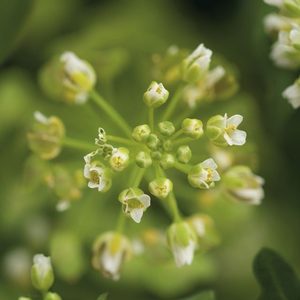ISU researchers transform pennycress into a crop

SOURCE: Illinois State University
October 1, 2020
BY Illinois State University
Though farmers consider pennycress (Thlaspi arvense) nothing more than a weed, Illinois State Professor of Genetics John Sedbrook is working to change their perspective—and the plant itself. Sedbrook and his student researchers in the School of Biological Sciences are genetically modifying pennycress as part of a multistate, multi-institutional effort funded by a five-year, $10 million USDA grant and a $13 million Department of Energy grant.
The researchers are attempting to transform the plant into a commercially grown cover crop that would be a boon to farmers and the environment. The harvested plant would be processed into biofuel, jet fuel, animal feed, and other products.
Advertisement
“This would not only help the environment, but also produce oilseeds that farmers can sell in these economically challenging times,” Sedbrook said. “Plants like pennycress take carbon dioxide out of the atmosphere to grow. Instead of adding to carbon in the atmosphere by digging for fossil fuels, you’re taking carbon that’s already there. So it’s a zero-sum game.”
Domesticated pennycress could be grown as a cold-resistant, high-yield oilseed crop across the central United States, where nearly 80 million acres of land devoted to corn and soybeans sit dormant in the winter months. Sedbrook said the same process was used in the 1960s to convert rapeseed into canola oil, a relative of pennycress that is in widespread use today.
Illinois State researchers—Professor of Water Ecology Bill Perry, Assistant Professor of Crop Science Nicholas Heller, and Professor of Soil Science Rob Rhykerd—are investigating how planting pennycress on otherwise fallow fields could also help farmers reduce soil erosion and nutrient loss, two factors that are imperiling water quality and aquatic life locally and as far downstream as the Gulf of Mexico.
Advertisement
This research has been ongoing for 10 years with the latest grant awarded in 2020. Illinois State researchers are currently working under the umbrella of the Integrated Pennycress Research Enabling Farm and Energy Resilience (IPREFER) program with colleagues at Western Illinois University, the University of Minnesota, The Ohio State University, the University of Wisconsin-Platteville, and the St. Louis-based crop development company CoverCress Inc.
Related Stories
The USDA reduced its outlook for 2024-’25 soybean oil use in biofuel production in its latest World Agricultural Supply and Demand Estimates report, released April 10. The outlook for soybean oil pricing was revised up.
BDI-BioEnergy International has signed a contract with Ghent Renewables BV to begin the construction of a pioneering biofuel feedstock refinery plant. Construction is underway and the facility is expected to be operational by the end of 2025.
Gevo subsidiary announces agreement with Minnesota Soybean Processors to track and verify sustainable agriculture attributes
Verity Holdings LLC, a subsidiary of Gevo Inc., has partnered with Minnesota Soybean Processors (MnSP) to implement Verity’s proprietary track and trace software. The collaboration aims to unlock additional value through export premiums.
U.S. operatable biofuels capacity increased slightly in January, with gains for ethanol, according to the U.S. EIA’s Monthly Biofuels Capacity and Feedstock Update, released March 31. Feedstock consumption was down when compared to December.
U.S. farmers are expected to plant 83.5 million acres of soybeans in 2025, down 4% when compared to last year, according to the USDA National Agricultural Statistics Service’s annual Prospective Plantings report, released March 31.
Upcoming Events









